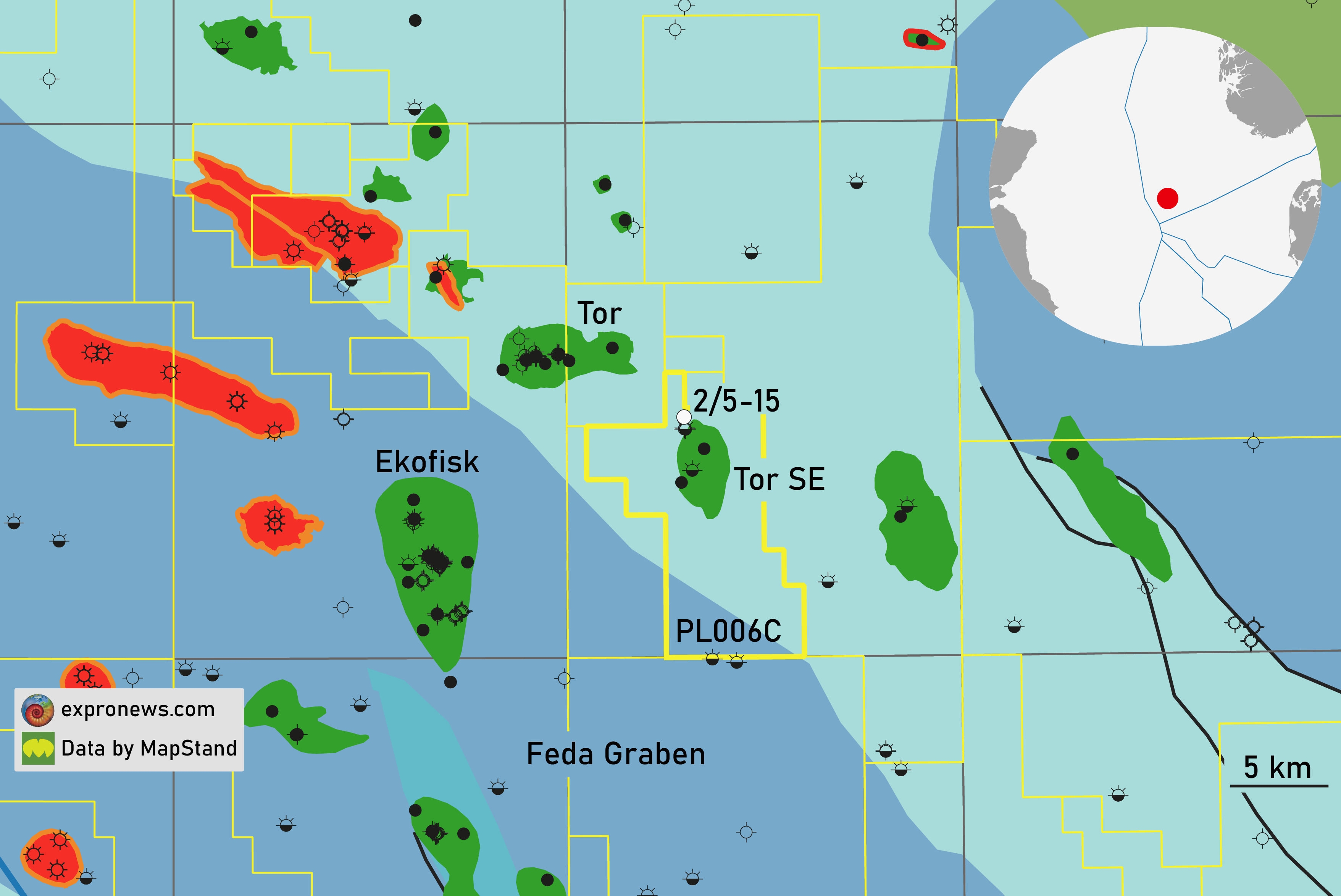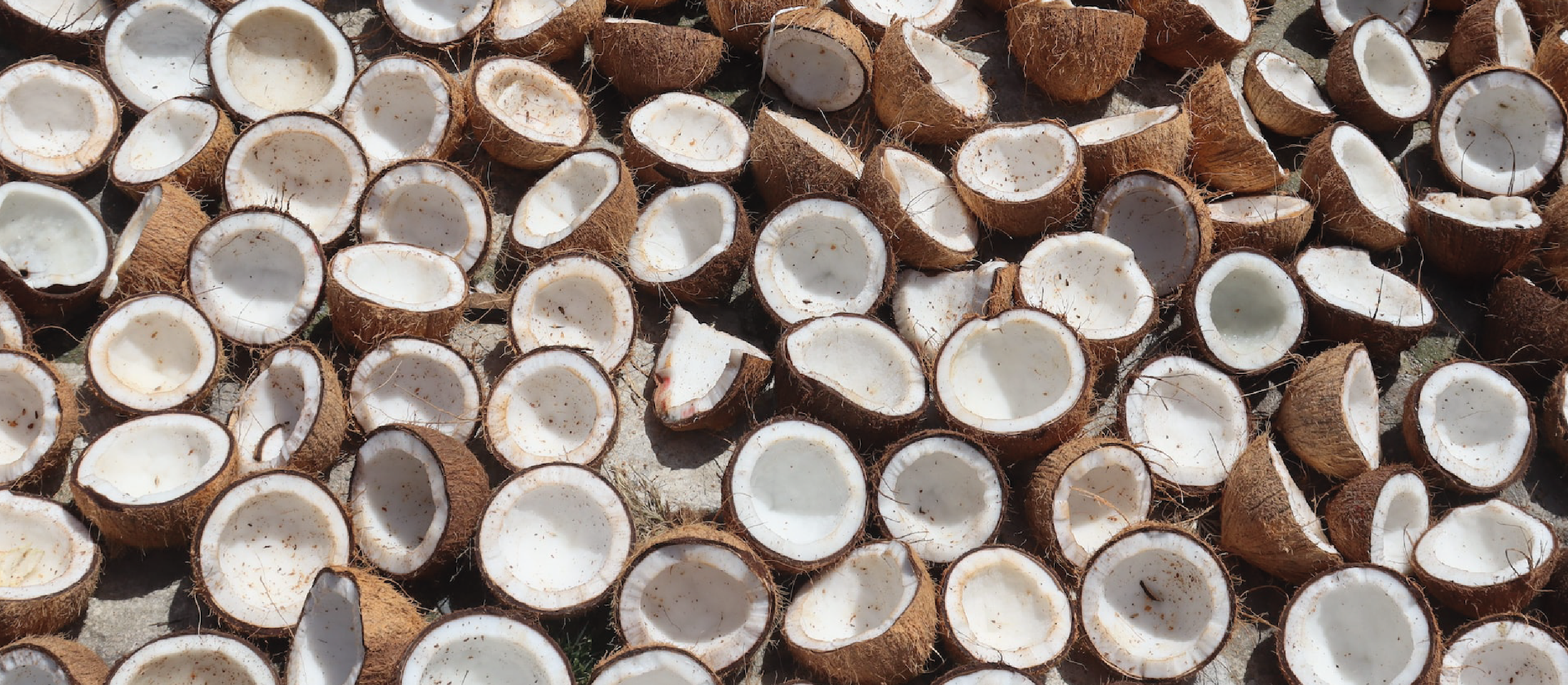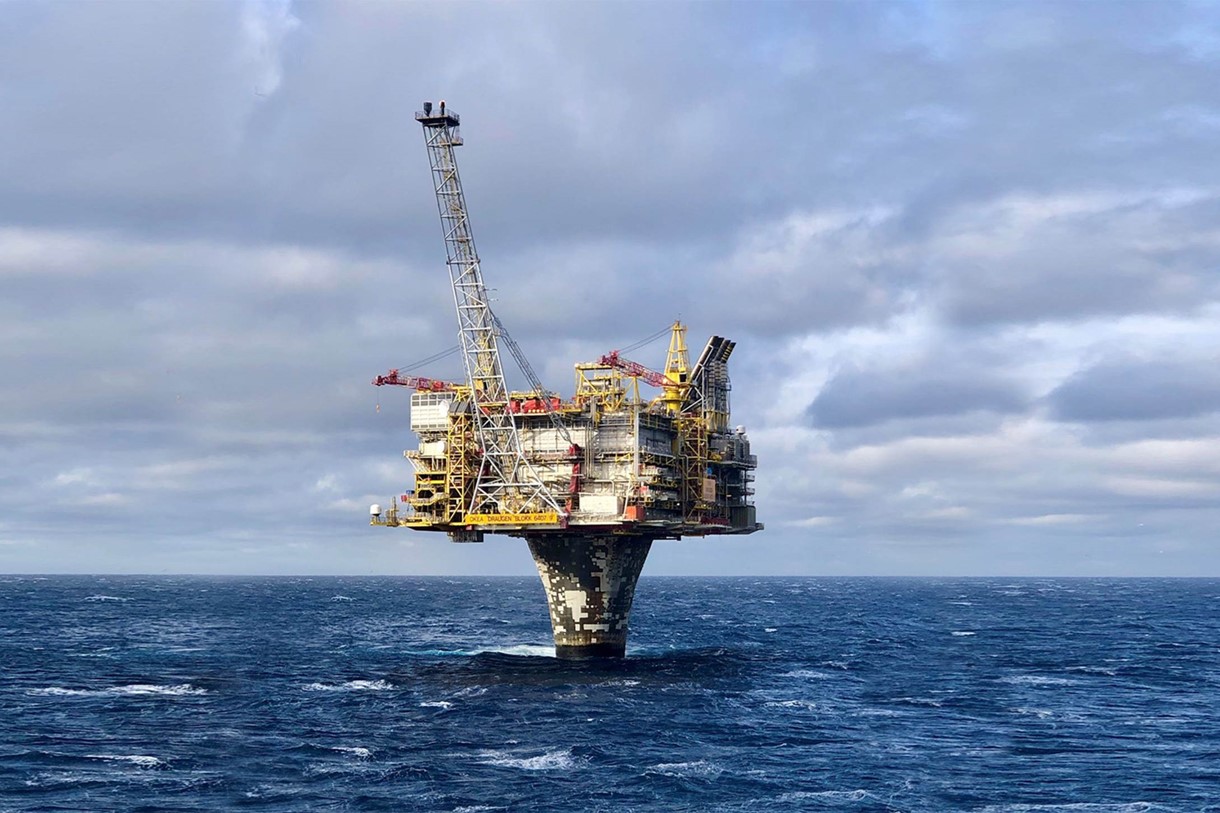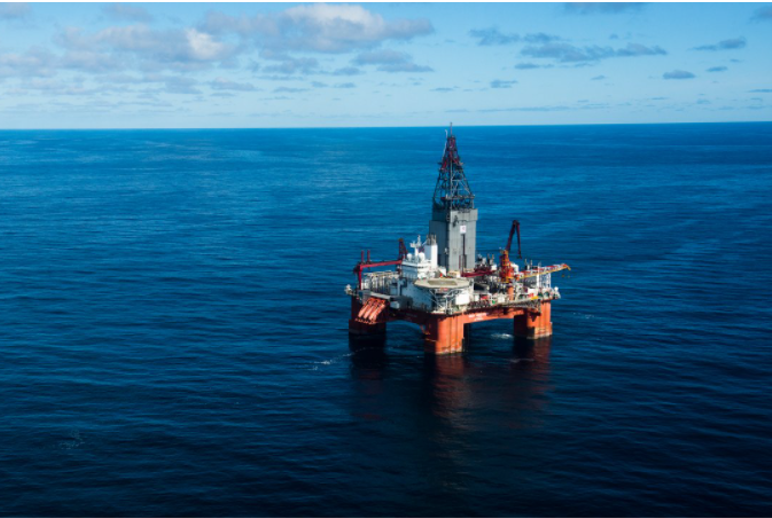An interesting “trend” is unfolding in the Norwegian Southern North Sea, where DNO and partner Aker BP (15%) spudded well 2/5-15 last week. In contrast to the main target of this well being the Chalk – the target that would be expected looking at surrounding discoveries – in this case the companies aim for the Gomez prospect in the overlying Paleocene stratigraphic succession.
Only a few weeks ago, OMV completed well 1/3-13 a little further to the northwest and although the main target of this well was the Chalk, oil was found in Paleocene sands whilst the Chalk turned out water bearing.
Ignored for a long time
It is interesting to see this taking place, and should be regarded as an attempt to finally prove the commerciality of the Paleocene overburden that was probably ignored for a long time as all the attention was on the Chalk following the Ekofisk discovery. Telling in that sense is that the older wells drilled on the Tor Southeast discovery (just south of the currently drilling well) do not really report on sands in the Chalk overburden, whilst there are indications they are there.
In 2/5-3, oil shows were reported from the Balder Fm onwards, but no mention was made of sands in the Paleocene succession. The composite well log from 2/5-8 doesn’t show sandstones in the Lista Fm, but the overlying Sele Fm contains some glauconitic oil-stained streaks of sand. Again, no mention is made of Paleocene sands in 2/5-5, but the generalised lithology log suggests that some sandstones were encountered.

The Southeast Tor field was discovered in the early days of exploration and contains about 24 MMboe of mainly oil in the Chalk. It has never been developed though, which is probably because of the challenging reservoir. An example of this is well 2/5-8 that was drilled in between the first two wells on the discovery. In contrast to finding a an oil column, the well only proved some oil shows along fault planes and was declared dry with shows.
Getting more interest
In contrast to wells drilled in the 1970’s and 80’s, in well 2/5-14S, drilled in 2008 and very close to the currently drilling well, three thin Paleocene sandstones were described; two Lista sandstones of 1 and 3 m thickness, and an intra Våle Formation sandstone (Borr Mbr) a little bit deeper of 6 m thickness. The two Lista sands were most likely oil bearing, but the Borr Sandstone seemed water wet. The main target of this well was still the Chalk though, and operator Lundin must not have had too much confidence in the prospectivity of the Paleocene given that they do not participate in the licence any longer.
So, now the time has come to really test the Paleocene properly. Looking at the thicknesses of the sands reported in 2/5-14S, it may be speculated that 2/5-15 is targeting slightly thicker sands in a more downdip position.
How does a Paleocene closure look like? Looking at some geological reports, it is likely that there is a stratigraphic component, given that most Paleocene sands in the area seem to pinch out quickly in a southwest direction. In addition, the well is still positioned on a salt wall that connects the Tor and Tor SE discoveries, so this may provide another trapping element.
In terms of volumes expected, DNO states 26-80 MMboe, whilst Aker BP is a bit more conservative, with a pre-drill estimate of 17-75 MMboe as presented in their investors presentation in January this year. In case of a positive drilling outcome, the oil in the Chalk of Tor SE may also become more attractive to develop in tandem.
Let’s keep a close eye on this well and learn if the Paleocene has the potential to deliver in this Chalk territory.
HENK KOMBRINK





